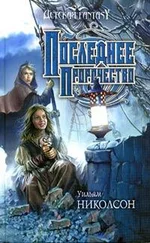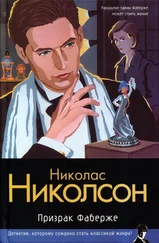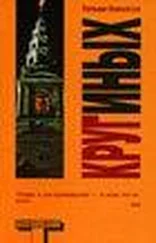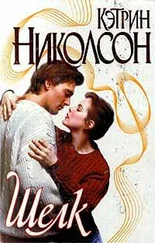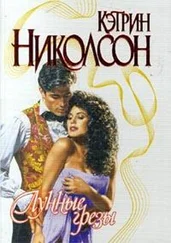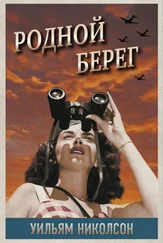‘Will you see Joe Kiefer when you’re in Kingston?’
‘Joe’s retired now. I’m glad you remember him, Larry. I shall tell him so.’
William Cornford gazes wistfully across the breakfast table at his son.
‘You know we’ve got the house in Normandy habitable now,’ he says. ‘Why not join me there this summer? It should be a good place for your painting.’
‘I’d like that,’ says Larry.
‘How’s it coming along?’ He wipes his mouth with his napkin. ‘The painting and so forth.’
‘I can’t exactly say how I’m getting on,’ says Larry, ‘but I’m hard at work. I’m afraid I’ve no accounts to show you. No figures to prove my progress.’
‘Of course not. But are you happy?’
‘Yes, Dad. I’m very happy.’
His father smiles.
‘Well, then. That’s the point, isn’t it?’
* * *
Larry tells his father he’s happy because his father is subsidising him and he wishes to give some return on his investment. The truth is more complex. He is finding that the work he has chosen – he calls it ‘work’ following his teacher’s example, shy of grander terms – causes him almost constant unease. Somehow, however steadily he applies himself, he always ends up dissatisfied with the end result. The process itself never fails to absorb him, even to obsess him. But he remains unconvinced of his talent.
He has chosen in recent weeks to limit himself to landscapes. Noticing that artists he admires have a way of repeating motifs in their work, or of working in defined geographical areas, he has decided to choose landscapes that feature a church. This is mostly a formal preference: the spire of the church, breaking the skyline like a knife, delivers a visual pivot for his composition. But it’s also an emotional choice. The church acts as a lightning conductor, a conduit for the supernatural into his scene. This is not something he talks about with his fellow students. More and more of them are coming under the influence of Victor Pasmore, drawn towards pictorial geometry, if not fullblown abstract painting. Among the hold-outs is Tony Armitage, the farouche boy who is showing an extraordinary talent for portraiture.
‘Geometry!’ exclaims Armitage with disgust. ‘It’s pure funk. They can’t face the world. They’re running away from life.’
Larry is inclined to agree. The Pasmore school strikes him as a form of Puritanism.
‘They’re visual Calvinists,’ he says. ‘All this reduction to pure form.’
Nevertheless his own work is highly formal. He is painting a view of St Giles’s church seen from an upper window of the college. The grey and white tower is built in three diminishing stages, two square, the last a hexagonal spire. On two sides of the tower project steep-pitched grey-tiled roofs. The church is the work of Gilbert Scott and has a window reputedly designed by Ruskin, but to Larry it has become a series of lines to be projected outward and upward as he forms his composition. He is painting both the actual church, and a diagram of sacred space. It’s not something he fully understands, but as he works he knows very quickly which lines have significance and which are trivial. As he begins to overlay the lines with tones of grey and brown and white, he struggles to let the various colours convey the light he wants in the picture, the instinct he has that it’s not stone walls he’s painting so much as the space they enclose.
There are moments as he works when he feels so near to capturing this simple truth that all he needs to do is let his brush go free. The thing is there before him. Rather than painting it into existence he is uncovering it, his brush the instrument of exposure. At such times his excitement is so intense that he loses all awareness of time and place, and works on long into the evening.
‘You know something,’ says Armitage, pausing to look. ‘That’s not as bad as your usual stuff.’
Larry stands back to see for himself.
‘No,’ he says. ‘It’s not there yet.’
‘Of course it’s not there !’ exclaims Armitage. ‘It’s never there ! But it’s not bad. And take it from me, not bad is as good as it gets.’
Larry has grown to like Tony Armitage very much, for all his startling outbursts and lack of personal hygiene. He has painted a head and shoulders of Nell that is to Larry’s mind quite extraordinary. Somehow he has managed to capture both her directness and her evasiveness. Nell of course hates the portrait.
The more Larry now looks at his St Giles, the less he likes it. But at this point Bill Coldstream appears.
‘Just the men I wanted to see,’ he says.
He stands still for a moment, examining Larry’s picture.
‘Yes,’ he says. ‘Good. Do you know the Leicester Galleries?’
‘Of course,’ says Larry. ‘I saw the John Piper show there.’
‘They’re putting together a summer show. Artists of Promise and so on. Phillips has asked me to suggest some of our people. I’d like to put you and Armitage up for it.’
Larry is speechless. Armitage takes it in his stride.
‘How long have we got?’
‘They want to open in early July,’ says Coldstream. ‘So the selection will have to be done by the end of April, I should think.’
With this he departs.
‘That’s one in the eye for Fairlie,’ says Armitage.
‘I had no idea,’ says Larry.
He means he had no idea their teacher rated him so highly.
‘I told you you were good.’
‘No, you didn’t. You said I wasn’t bad.’
‘What you need, Larry,’ says Armitage, ‘is faith in yourself.’
‘Any idea where I’m to get it?’
‘The great thing you have to keep in mind,’ says Armitage, ‘is that everyone else is clueless. They’re all stumbling about in the dark. They’ve no idea what’s good and what isn’t. They’re waiting to be told. So all you have to do is tell them, loudly and often.’
Larry sighs.
‘Not my style, I’m afraid.’
* * *
Larry tells Nell the news that evening. She throws her arms round him and kisses him.
‘I knew it! You’re going to be famous!’
Nell no longer works as a life model at the school. She’s got herself a job as receptionist to an art dealer in Cork Street. Julius Weingard, according to Nell, is both queer and crooked, but by her account so is everyone else. She tells Larry hair-raising stories of how Weingard cheats his clients. Everyone knows, she says, it’s just how the art world works. No one believes in any artist’s actual worth, only in reputation and the degree to which that can be converted into sales.
‘I shall make Julius come to your show,’ Nell says. ‘Maybe he’ll decide to take you on. He’ll tell you to use brighter colours, darling. Everyone is tired of khaki.’
Nell continues to fascinate Larry, but their relationship is not simple. They sleep together but they don’t live together. Nell has her own digs, which Larry has never entered. She is often away, carrying out assignments for Weingard, or visiting friends about whom she tells him nothing. This other life, which she keeps from him with a teasing secrecy, should trouble him, and occasionally does. But the truth is that much of the time it suits him.
Larry’s feelings for Nell are forever catching him by surprise. The volatility of their relationship both disturbs and excites him. When she’s away he can build up a longing for her that almost paralyses him. But when she’s been with him for a few days, he begins to withdraw into himself, and want to be alone.
‘You’re getting so middle-aged, Lawrence,’ she tells him. ‘You should let yourself go more.’
He knows she’s right, and he loves her for being a true Bohemian, a free spirit, a wild creature. But then there are the moments when he catches a glimpse of the other side of this freedom, and sees in her a lost child. Her youth and her powerful attractiveness disguise this inner core of fear, but every now and again it breaks through. Once, after making love, she began to cry.
Читать дальше

